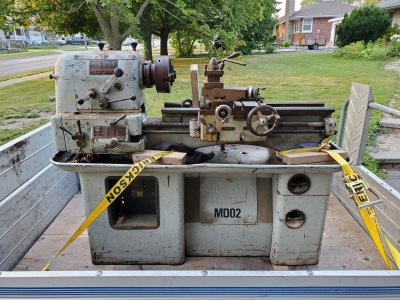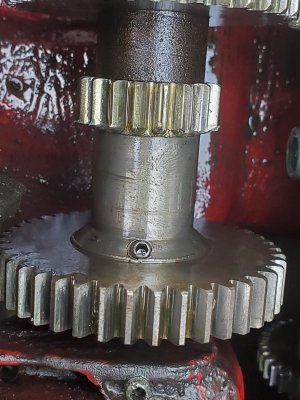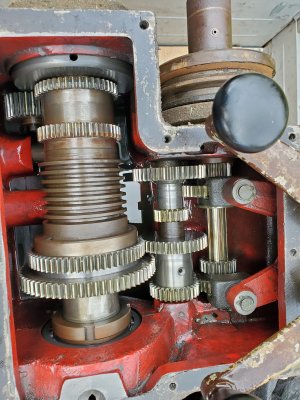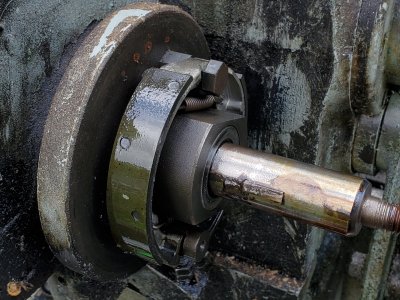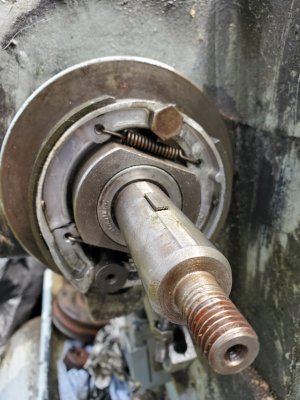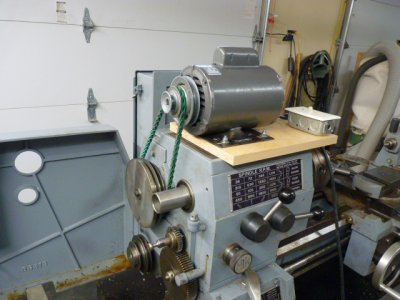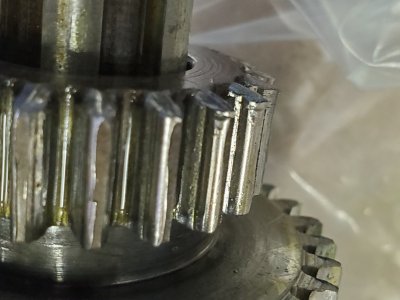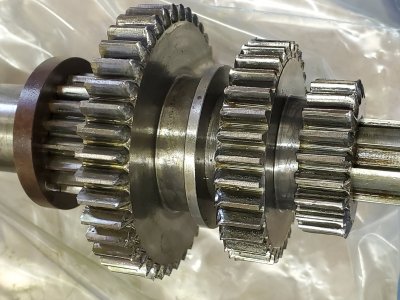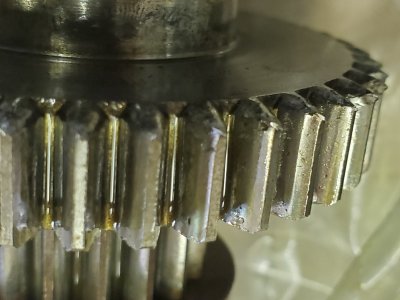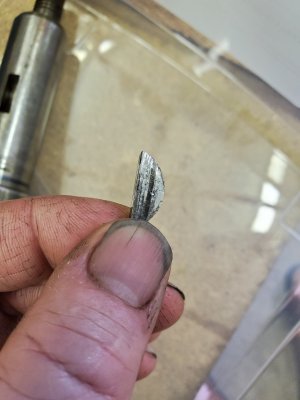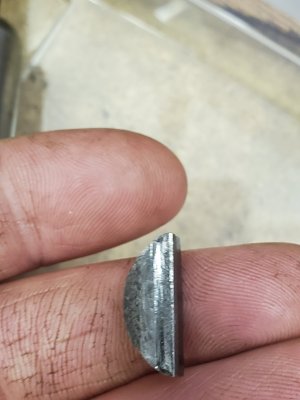I got the lathe home yesterday. After checking it over more noticed when rolling the drive pulley over back and forth, there was quite a bit of backlash. Pulled the top cover off the headstock to inspect. The backlash appears to be in the gears on the 1st and 2nd shaft inside. I believe the manual described this as shaft A and B. Also noticed on the B shaft the Set screw in the gear was tight to shaft but looked like thread in gear was worn(was moving). There was lots of burrs on the gear teeth probably from engaging the speed selector while still in motion. Oil was low in the gearhead, oil laying in the chip try so seals must be leaking from the headstock, gearbox and apron.
Other issues so far are: 1. cracked brake shoe, 2. no drive motor 3. possible the incorrect pulley for drive motor 4. wiring disconnected and possible some missing electrical components. 5. Missing spanner for chuck and missing motor compartment cover.
My plan next is to flush out the gearhead, get a motor and pulley to run it and see if there are any other issues before going further.
Would anyone have the specs of the pulley diameter of the motor pulley for this machine?
Other issues so far are: 1. cracked brake shoe, 2. no drive motor 3. possible the incorrect pulley for drive motor 4. wiring disconnected and possible some missing electrical components. 5. Missing spanner for chuck and missing motor compartment cover.
My plan next is to flush out the gearhead, get a motor and pulley to run it and see if there are any other issues before going further.
Would anyone have the specs of the pulley diameter of the motor pulley for this machine?

